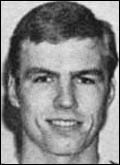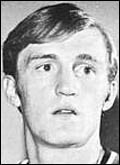Monthly Archives: May 2014
It’s well known that the hockey players of the 1970s were not paid much more money than the rest of the population. Back then, when owners had all the leverage and convicted felon R. Alan Eagleson was in control of the union, some players had to get a job in the off-season just to make ends meet. Very few players, other than a handful of superstars, would have been considered rich men, and almost all of them needed to find a career after hockey. Some of them still didn’t make enough money or ran into other financial issues in retirement, and those are the saddest stories of al.
But for every rule, there are exceptions, and perhaps no player in the 1970s got more total money out of his career than Bill Clement — regardless of how much he earned as a player.
Clement was always a smart player, and he recognized fairly early in his career that he would have to play a role — mostly as a penalty-killer — to enjoy a long career. As a result, he lasted 12 years in the NHL and won the Stanley Cup championship twice. He also did another smart thing back then — a really smart thing.
What he did was to set himself up for life beyond hockey by beginning to work as a broadcaster while he was still an active player. In that sense, he truly saw the future, recognizing that he could parlay his relatively t high-profile — if not high-paying — career into a much longer one that, over time, would be more lucrative. Much, much more lucrative.
For the past 30 years or so, Clement has been a familiar face to generations of American hockey fans as one of the top broadcasters in the business. He showed remarkable skill and charisma early in his broadcast career, and he just kept building on that. He moved from hockey to Olympic sports with no trouble at all. He has never been without work as a broadcaster, and he has done voice work in hundreds of TV commercials, often appearing on camera as well.
But Clement did another smart thing — a really, really smart thing.
Clement set himself up to retire with a lot of money in the bank by parlaying his broadcasting skills into another field — motivational speaking. Today, he is a highly sought-after speaker — the kind of guy big companies love to put up in front of their employees to talk about leadership, teamwork, etc. And Clement is really, really good at it. Just watch some of the Youtube videos, and you’ll see what I mean.
In fact, Clement is such a good motivational speaker that he makes it possible for me to enjoy listening to a motivational speech. That’s no easy feat.
So hats off to you, Bill Clement. You have shown that not only is there life after hockey, there are ways to amplify success by continually looking toward the future and setting yourself up for it.
Clement is one of the few players of the 1970s who made far more money (adjusted for inflation) after his career ended than while he was playing. While he was a solid, dependable player, he was not a standout by any means. In today’s NHL, he would make about $2.5 million per year and would never have to work again after his career. But he didn’t play in today’s NHL. Instead, he took what he had and he built on it. And then he built on that. Today he is a true superstar in both the broadcast field and the world of corporate speaking. And he is still going strong.
What better type of person could there be to give a motivational speech?
In an earlier blog post about the potential discrimination against American hockey players in the 1970s, I mentioned how the perception that American players were less prone to fighting might have played a role in the NHL’s reluctance to accept them in larger numbers. The theme of fighting and violence in the 1970s comes up a lot as I look through hockey coverage from that decade.
The violence issue came up in researching Don Saleski, who was criminally charged for an altercation with a security guard in 1976. The issue arose again in researching Greg Polis, who was once sued by a Penguins fan. Hockey was on trial in the court of public opinion for much of the 1970s.
So far the most interesting violence-related news of the 1970s came up in my recent research on Dan Maloney, the former player and coach whose fighting skills were legendary in their day. The folks who visit sites like hockeyfights.com probably can speak more to Maloney’s prowess than me, but it’s clear that some fans who bought tickets in the 1970s must have felt they were getting their money’s worth when Maloney dropped the gloves.
Anyway, Maloney made history during the 1975-76 season when he became the public scapegoat for all violence in the NHL. You can read the whole story on his profile page, but the basics are that he became caught up in a Canadian politician’s efforts to show his constituents that he found violence in hockey abhorrent and that players on the ice should not be exempt from the rules of society. When Maloney was charged with assault on Toronto defenseman Brian Glennie, the case made headlines across North America. Several months later, it took a jury trial to find him not guilty. His lawyers did an outstanding job defending him and probably protected the NHL’s image in the process. They were able to successfully argue that on-ice violence (short of killing an opponent) was part of the culture of professional hockey, and it was unfair to hold someone to societal standards for assault when they had willingly agreed (and were paid) to be part of that culture.
Again, I recommend you click on the Maloney link above to read the whole story of what happened during the 1975-76 season, because it is truly fascinating to see both how violent the game was and how that violence suddenly became a political issue for the attorney general of Ontario. Maloney was the first of at least three players to be criminally charged with assault while playing at Maple Leaf Gardens that season.
One of the interesting things that came up in the Maloney trial was the defense’s assertion that hockey violence only became noteworthy once games started to be televised. The old-time hockey of Gordie Howe’s heyday and earlier was extremely violent, but most of it was never caught on tape, so the society at large didn’t have any concern for it.
I have never been particularly interested in hockey violence, and one of the things I enjoy most about the Olympics is that you don’t see fights. I understand why fighting happens, and I can accept the reasoning behind it. One thing I can say for sure is that the NHL we know today is far less violent than it was in the past. Yes, there is still fighting, but I don’t see the league using it as a selling point, which is clearly what was going on back in the day. The old joke about going to a fight and a seeing a hockey game break out will make little or no sense to a younger generation that is learning to love the game today. But in the 1970s, hockey violence was no joking matter. It was, in fact, what many people were paying to see.


